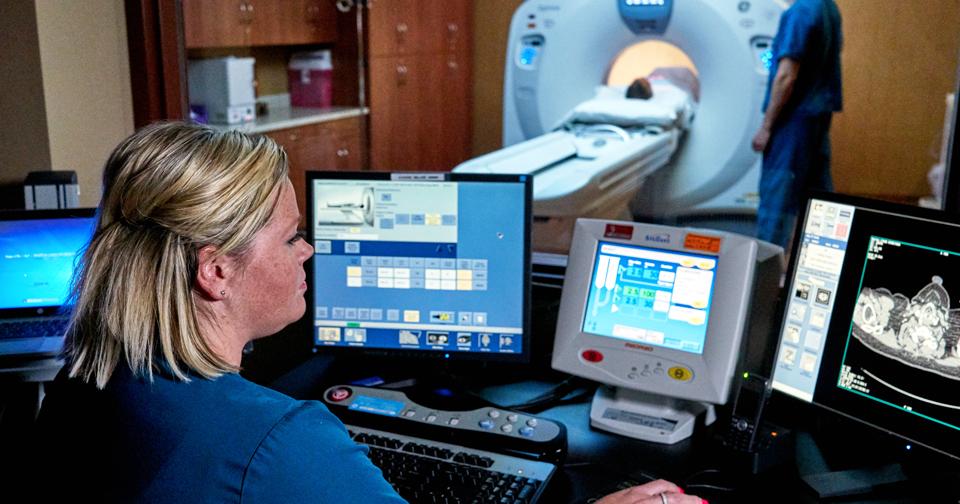How To Treat Osteosarcoma
Osteosarcoma is a type of bone cancer that originates in the cells that form an individual's bones. In rare cases, it may occur outside of the bones in soft tissue. The long bones in the legs and arms are the most common locations where osteosarcoma is found, but it can begin in any bone. Certain genetic conditions and previous radiation therapy increases an individual's risk for developing osteosarcoma. Common symptoms of this type of cancer include joint or bone pain, breaks or injury to the bone for no apparent reason, and swelling near a bone. Osteosarcoma is diagnosed using tests such as CT scan, MRI, PET, bone scans, a needle biopsy, and a surgical biopsy. The main concern with osteosarcoma is the cancerous cells can metastasize or spread to other parts of the body. Once cancer has spread past its local region, successful treatment becomes more complex and challenging.
Numerous methods may be used individually or in combination to treat osteosarcoma. Learn about these now.
Chemotherapy

Chemotherapy is the method of treating cancer by using specific potent drugs to kill off rapidly multiplying malignant cells. Chemotherapy drugs have a systemic effect, or target and destroy cancerous cells throughout all parts of the body. Osteosarcomas are commonly treated using chemotherapy with surgical procedures even though most of these tumors have not yet spread upon diagnosis. The reason for this combination is this type of cancer has proven to commonly return after being treated with surgery alone. Most cases of osteosarcoma are treated with neoadjuvant chemotherapy (chemotherapy prior to surgery) for ten weeks. Adjuvant chemotherapy (chemotherapy after surgery) is also commonly used to treat osteosarcomas for up to a year following surgery. If the patient's tumor did not respond well to the medications used in neoadjuvant chemotherapy, different drugs are used when the patient undergoes adjuvant chemotherapy. Because chemotherapy is given in the highest doses that can be safely given, the potent drugs can damage the bone marrow around the body. If this damage is extensive, the cancer patient may need growth factors as well.
Continue reading to reveal more options for treating osteosarcoma now.
Radiation Therapy

When high-energy particles or rays are used to kill cancer cells, it is called radiation therapy. Most osteosarcoma patients do not undergo radiation therapy because these types of malignant cells are not effectively killed off in this manner. However, there are some cases where osteosarcoma is unable to be entirely removed during a surgical procedure. For example, osteosarcoma tumors that occur in the facial bones, hip bones, or jawbone are often not able to be completely removed with surgery. In such cases, as much of the cancerous tumor is removed as possible, and then radiation is used to try and kill off the remaining portion of the tumor. Chemotherapy is also used following radiation therapy in these cases. While radiation can be used to treat osteosarcoma malignancy itself, it is also used in cases where the cancer is terminal. The terminal patient may be suffering from symptoms such as swelling and pain as a result of multiple large osteosarcomas. Radiation is used in these patients to improve the quality of life by alleviating distressing symptoms.
Get more information on how to effectively treat osteosarcoma now.
Limb-Sparing Surgery

Limb-sparing surgery is a type of procedure where the cancerous cells and surrounding tissues are removed from the limbs while keeping them intact. The decision between full amputation and limb-sparing surgery depends on the location of the tumor, the degree of metastasis, and how large it is. This type of surgery is a complicated procedure involving removing cancerous cells while preserving the neighboring tendons, blood vessels, and nerves. The goal is to keep as much of the limb's appearance and function as possible, but also successfully remove the malignant mass. When osteosarcoma is removed, the section of bone around it must be removed as well. The excised part of the bone is replaced with an internal prosthesis or a bone graft. In some cases, the bone is replaced with a combination of a bone graft and internal prosthesis. Most patients who have limb-sparing surgery to treat osteosarcoma will need more surgical procedures in the long term to replace the prosthesis as bones grow or as the prosthesis naturally wears down.
Uncover more details on treating osteosarcoma now.
Rotationplasty

Rotationplasty is a type of surgical procedure used to treat malignancies that occur in the bones of or around the knee joint. Without this type of specialized surgery, the patient with osteosarcoma in this region would need a full leg amputation to eradicate the tumor entirely. With a rotationplasty, the patient ends up with a knee joint and is only missing the lower leg and ankle. This mechanism allows the patient to use a partial prosthetic leg rather than a full prosthetic leg. This mechanism is accomplished by removing the end of the femur closest to the knee joint, the knee joint itself, and the top part of the tibia. The remaining long portion of the tibia, the attached ankle joint, and foot are then use to make a knee joint. The tibia is attached to the femur bone facing in the opposite direction, so the foot is pointed backward instead of forward. The patient is then able to undergo physical therapy with specialized equipment to learn how to use the rotated ankle and foot as a knee joint. The patient essentially ends up with a below-the-knee amputation allowing for more mobility and control than a full leg amputation.
Get more details on methods used to treat osteosarcoma now.
Amputation

Patients with osteosarcoma that has metastasized into the bone's neighboring tendons, nerves, and blood vessels may require full limb amputation. When most of the limb's functionality will be compromised because of the tissue that has to be excised, complete amputation of the arm or leg is often recommended. Once an amputation has been deemed necessary, medical imaging tests such as MRIs are used to help the surgeon make an identification on how much of the limb will need to be amputated. The surgical procedure of limb amputation is carefully planned out so the remaining parts of skin and muscle can be formed into a cuff around the end of the remaining bone. After surgery, the cuff will be precisely fitted with a specialized prosthetic limb to allow the patient some degree of functionality and mobility. It may take up to a year for the patient to learn how to maximize their use of a prosthetic limb. While the aesthetic appearance of limb-sparing surgery to treat osteosarcoma is more acceptable and desired, a full limb amputation has shown to have less post-procedural complications and lower instances of cancer recurrence.